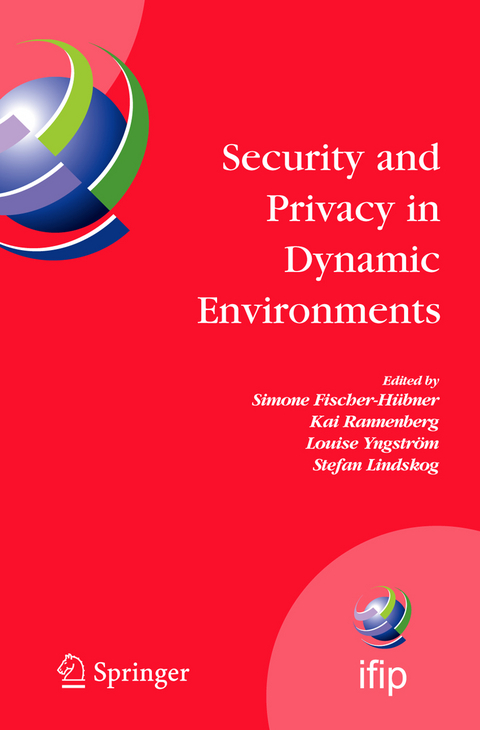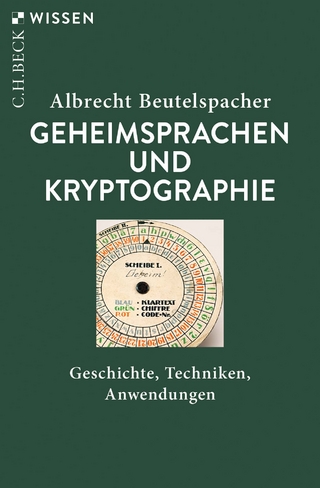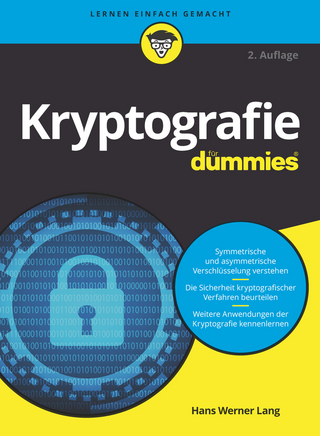
Security and Privacy in Dynamic Environments
Springer-Verlag New York Inc.
978-0-387-33405-9 (ISBN)
Privacy and Privacy-Enhancing Technologies I.- Improving Availability of Emergency Health Information without Sacrificing Patient Privacy.- Ensuring Privacy for Buyer-Seller E-Commerce.- A General Certification Framework with Applications to Privacy-Enhancing Certificate Infrastructures.- Security in Mobile and Ad Hoc Networks.- Authenticated Query Flooding in Sensor Networks.- Identity Based Message Authentication for Dynamic Networks.- Providing Authentication and Access Control in Vehicular Network Environment.- Trust and Security Management.- A Framework for Web Services Trust.- Trust: An Element of Information Security.- Security-by-Ontology: A Knowledge-Centric Approach.- Privacy Enhancing Technologies II.- A Methodology for Designing Controlled Anonymous Applications.- Design Options for Privacy-Respecting Reputation Systems within Centralised Internet Communities.- Protecting (Anonymous) Credentials with the Trusted Computing Group’s TPM V1.2.- Attacks, Vulnerability Analysis, and Tools.- Analysis and Improvement of Anti-Phishing Schemes.- CAT — A Practical Graph & SDL Based Toolkit for Vulnerability Assessment of 3G Networks.- Protecting Web Services from DoS Attacks by SOAP Message Validation.- Access Control and Authentication I.- A Flexible and Distributed Architecture to Enforce Dynamic Access Control.- A Paradigm for Dynamic and Decentralized Administration of Access Control in Workflow Applications.- CAS++: An Open Source Single Sign-On Solution for Secure e-Services.- Security Protocols.- A Synchronous Multi-Party Contract Signing Protocol Improving Lower Bound of Steps.- On the Cryptographic Key Secrecy of the Strengthened Yahalom Protocol.- Sealed-Bid Micro Auctions.- Intrusion Detection.- Detecting Known and Novel Network Intrusions.-Evaluating Classifiers for Mobile-Masquerader Detection.- VisFlowCluster-IP: Connectivity-Based Visual Clustering of Network Hosts.- Usability and Awareness.- A Usability Study of Security Policy Management.- Considering the Usability of End-User Security Software.- Utilizing the Common Criteria for Advanced Student Research Projects.- Privacy Enhancing Technologies III.- On the Relationship of Privacy and Secure Remote Logging in Dynamic Systems.- Privacy-Preserving Shared-Additive-Inverse Protocols and Their Applications.- Access Control and Authentication II.- Click Passwords.- Cryptographically Enforced Personalized Role-Based Access Control.- Access Control and Authentication III.- Using VO Concept for Managing Dynamic Security Associations.- Secure Fast Handover in an Open Broadband Access Network using Kerberos-style Tickets.- Forensics.- Network Forensics on Packet Fingerprints.- Oscar — File Type Identification of Binary Data in Disk Clusters and RAM Pages.- IFIP WG 11.1/11.8 Security Culture Workshop.- Organizational Security Culture: More Than Just an End-User Phenomenon.- Cyber Security Training and Awareness Through Game Play.- Internalisation of Information Security Culture amongst Employees through Basic Security Knowledge.- Bridging the Gap between General Management and Technicians — A Case Study in ICT Security.- Value-Focused Assessment of Information Communication and Technology Security Awareness in an Academic Environment.- Using Phishing for User Email Security Awareness.- IFIP WG 11.4 I-NetSec’06 Workshop.- Anonymous Credentials: Opportunities and Challenges.- Practical Private Regular Expression Matching.- A System for Privacy-Aware Resource Allocation and Data Processing in Dynamic Environments.- The APROB Channel: AdaptiveSemi-Real-Time Anonymous Communication.
| Reihe/Serie | IFIP International Federation for Information Processing ; 201 |
|---|---|
| Zusatzinfo | XVI, 494 p. |
| Verlagsort | New York, NY |
| Sprache | englisch |
| Maße | 155 x 235 mm |
| Themenwelt | Informatik ► Theorie / Studium ► Kryptologie |
| ISBN-10 | 0-387-33405-X / 038733405X |
| ISBN-13 | 978-0-387-33405-9 / 9780387334059 |
| Zustand | Neuware |
| Haben Sie eine Frage zum Produkt? |
aus dem Bereich


